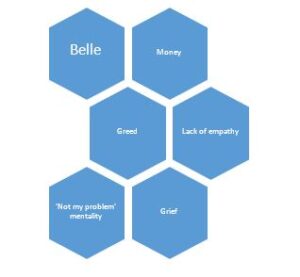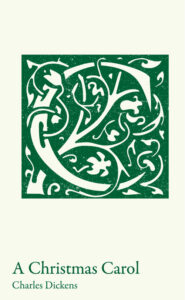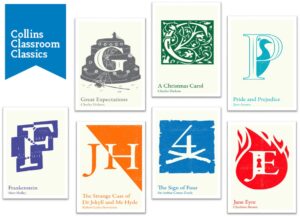A Christmas Carol was sold as a hugely popular ‘Christmas Crawler’ in the Victorian era for a shilling; a meagre amount but far from affordable for all Victorians so it tended to be bought by one person and then read aloud to many. In my mind these readings take place in a dark kitchen, with servants huddled around a fire in the evenings casting shadows against the wall – the perfect setting for ghost stories. Its popularity has never dwindled and its central character’s persona is now used to describe anyone who is miserable or penny pinching. It is both a macabre and uplifting story that brings a classroom to life and resonates with all ages. The central message of goodwill to all is integral and vitally important in today’s current political and cultural climate and I would strongly advocate teaching this as a GCSE text.
5 discussion points
- Look at the two children personified by Dickens as ‘Ignorance’ and ‘want’ on page 72 of Collins Classroom Classics – A Christmas Carol, ‘Yellow, meagre, ragged, scowling, wolfish…pinched, and twisted them and pulled them to shreds’. To what extent is this novella a cry for social change in the Victorian era? You may like to prompt discussion with the following points: What does the introduction suggest about the matter? What do we know about living conditions in this era and how does Dicken’s present this throughout the novella?
- This book has been described as both a fairy tale and a ghost story. In your opinion, which is correct and why? You may like to present this activity as a debate concluding in a vote.
- Using your knowledge of novel, what does it mean to be ‘a scrooge’? What does the term mean nowadays? How is his earlier character the antithesis of what he later becomes? What is Dicken’s moral message here?
- Can you describe or draw your impression of each ghost? Which do you think is the most important and why? How do they differ in appearance? How do they differ in their message?
- What happened to Scrooge to make his lose his way and become so desensitised?
Use the below chart to prompt discussion; it could also be used as an ordering activity.
 5 activities
5 activities
- Ghosts. Simply present the title to your class when entering the door. Allow students three lessons to discuss them within the novella and come up with a performance plan – it might be an adaptation of a scene, a re-write, a song or a poem. These can then be peer and self-assessed or used as a speaking and listening activity.
- Charity begins at home. How does the novella address the need for charity? Ask students to come up with a plan for caring more about society and those less fortunate them themselves by asking the following questions: A). What could you do? B) What could your class do? C). what could the school do? D). How will we make it happen?
- Read about the Fizziwigs on page 34 onwards and sketch the scene as it is presented to Scrooge. How is this similar to the idyllic images of Christmas we are still shown today? Now read and sketch Tiny Tim’s account on page 55 onwards. How does this compare? Can the class remember adverts or TV programmes that show both sides of these Christmas images? What about Christmas songs too? Band aid verses Wizard for example – could they listen to these songs in class and discuss further?
- Following the previous activity, could the class create their own Christmas song? What are the conventions needed? Would theirs be a charity version or a follow a more traditional path? Could they create a Dickensian version using the characters? This would be fun to produce too.
By Joanna Fliski
Joanna Fliski has taught English Literature and Language to 11-18 year olds at an urban comprehensive secondary school for 10 years, she had the highest value added score for her students and was nominated for an outstanding teacher award. As well as teaching Drama and Media GCSE she was head of PSHE, trained teachers and is a behavioural specialist. Joanna currently teaches in primary schools in Bristol. She is also a freelance author, writing resources and teacher guides for the Cambridge IGCSE, creating schemes of work and contributing to a number of educational blogs.
Collins Classroom Classics
Just £1.50 each for schools!
New for 2019 are the Collins Classroom Classics: the complete 19th century novels accompanied by introductions and glossaries written by experienced teachers. They are designed to help students understand the context in which each novel was written in.





